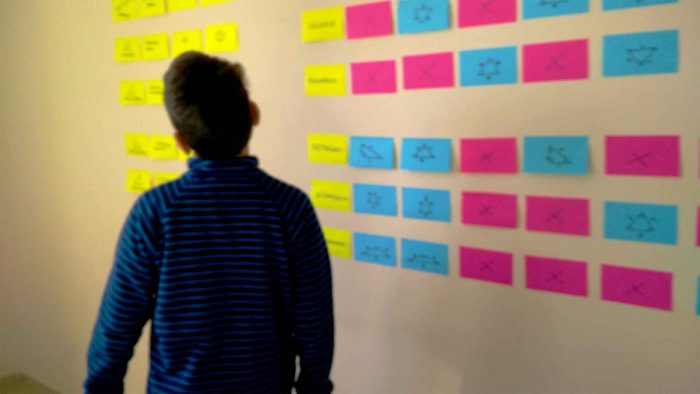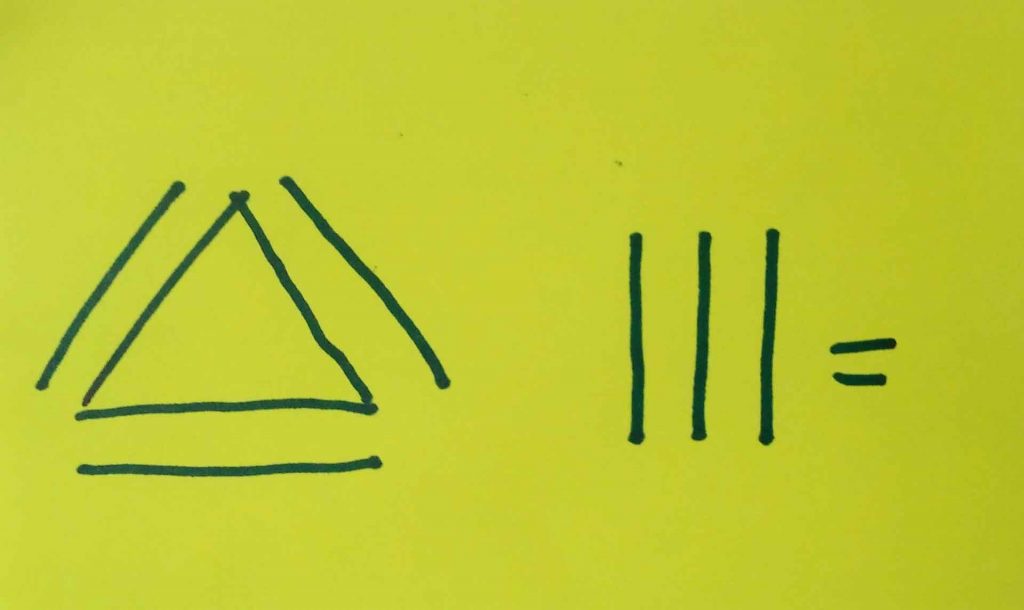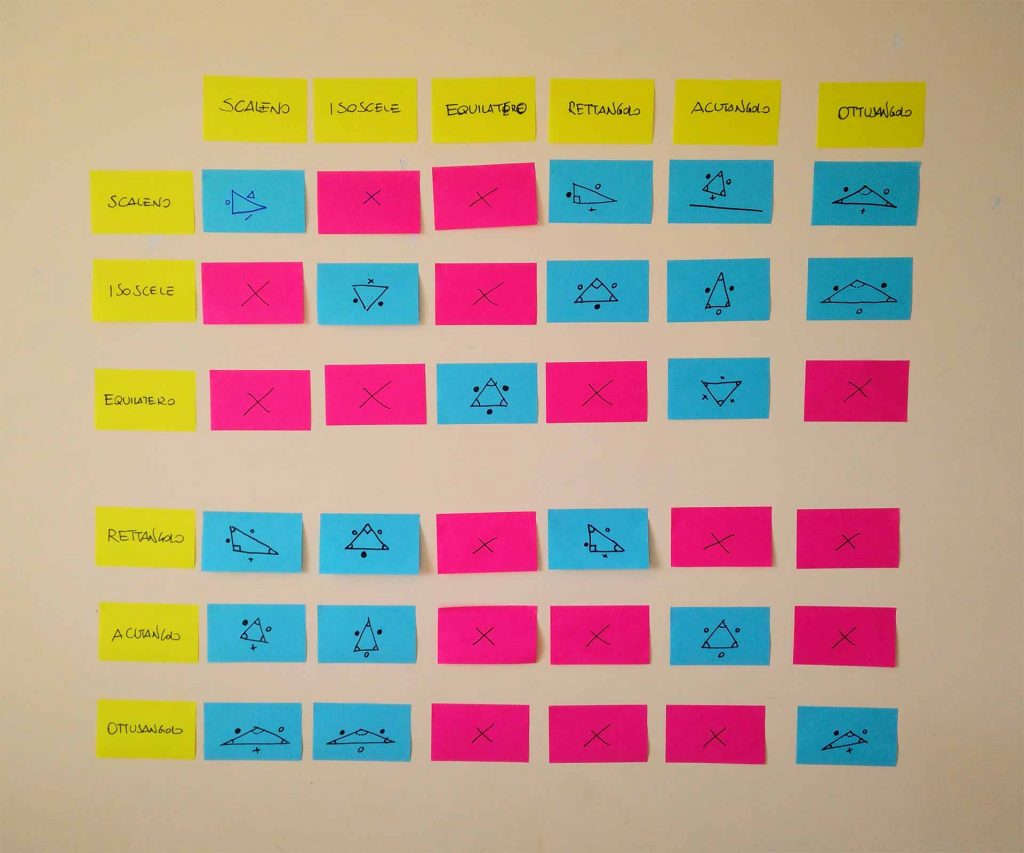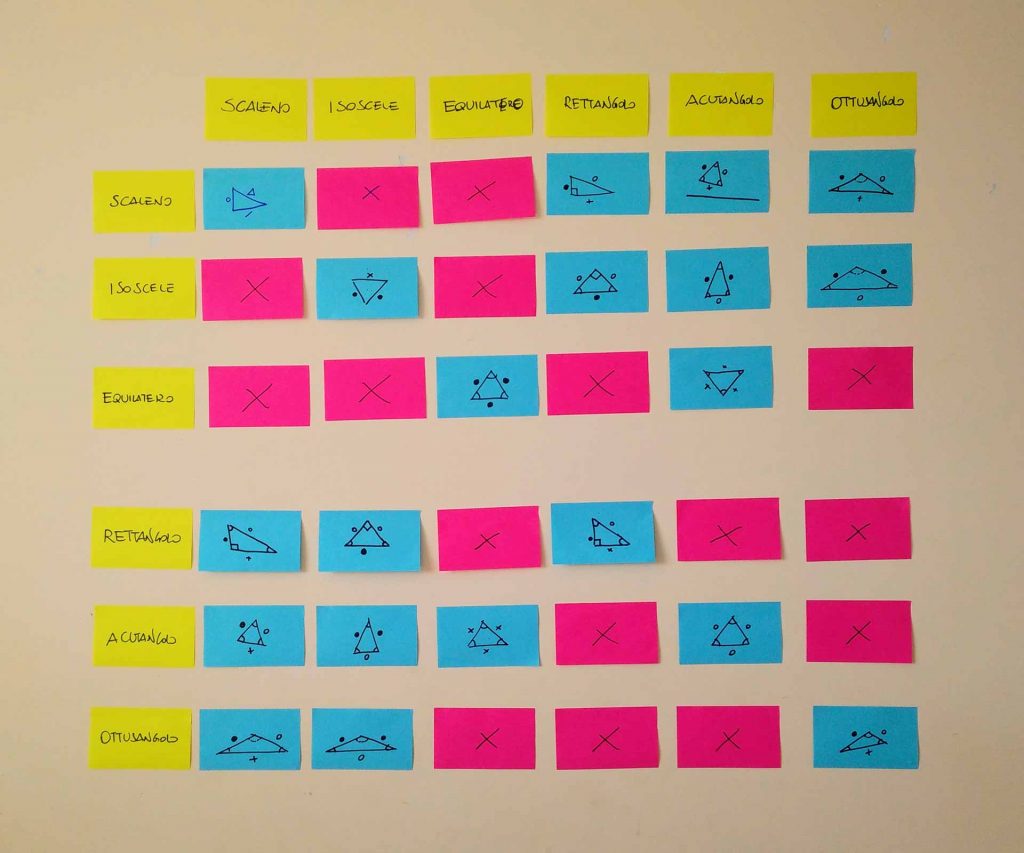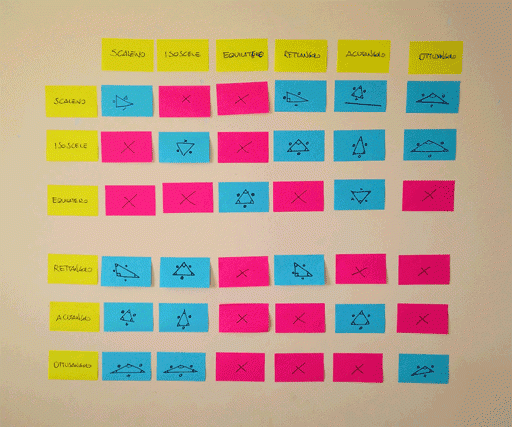How to facilitate group processes in solving simple, complicated, and complex Problems. Methods applied in the 1st Collective Intelligence Workshop of OsservAgro on the Sustainability of agri-food systems. Part of a series on Collective Intelligence Design.
Series Navigation
Collective Intelligence Design and Facilitation
Facilitating Collective Intelligence to solve complex problems
To find solutions we need first to understand the problem we are trying to solve.
Not all problems are created equal. By distinguishing between different types of problems we can choose the processes that are better suited to solve them.
How to solve a problem?
You can work to solve a problem only if you have a clear model of the problem you want to solve. To avoid being busy just for the sake of it, wasting time and resources, we need to do some preliminary thinking about the problems we’re passionate about or which are creating pain to us.
Working at the definition of the problem is the first important step towards solving it. Problem setting is a part of the solution method.
In any design method, as the Design Thinking method, for instance, the initial effort is dedicated to understanding, clarifying and defining the solution we are designing for. The “design-as-a-plan” process includes a research and exploration phase which helps to clarify what the “design-as-a-noun” is supposed to be.
A Systems Thinking approach to problem definition leads to Systemic Design, a design process in which designers take into consideration:
- All parts involved.
- Interactions between them.
- Identification of a “North Star”, a future vision where the problem is solved (or changed as we will see, later on).
- Identification of a “Near Star”, the next big achievement we need to steward the system to, so we can concretely move towards our North Star.
How to define a problem?
It’s always difficult to put one problem, an abstract concept with tangible consequences, into clearly defined boundaries. But “boundary” is a key concept at the foundation of the Systems Thinking approach when talking about a system. How can you point your finger at “a system” if you cannot put it within finite and defined boundaries? We would go, of course, beyond the realms of concepts which we can easily grasp and manage, to reach the field of philosophy (what are the boundaries of the sky?).
Still, by arbitrarily setting possible boundaries to a system, it becomes easier to talk about it, to have the possibility, and sometimes the illusion, to manage it and, to a certain extent, to understand it.
Stretching our minds to define boundaries (think about nation-state borders, can you see them in real life?) is a needed step to start working with systems and to collaborate on understanding them.
That is why there are so many different thinking approaches, sometimes overlapping, other times contradicting each other.
Navigating and adapting to tides and currents are much better analogies when we talk about facing complex challenges. How do you command your boat in white waters? What’s the wind like?
Problems: making distinctions
It’s natural and intuitive for most of us to distinguish between two main types of problems: easy and hard. Sometimes we use words as “complex” or “complicated” by meaning the same thing: that is a difficult problem. By going deeper we discover that we can put the systems in which our problem lives in a more articulated set of categories. The most apparent to us are: simple, complicated and complex problems.
What is a simple problem?
Simple problems have a straightforward solution. They represent the “known knowns”.
If the water faucet is leaking I can call the plumber who will fix it.
I am not thinking about any other consequence besides calling another person, explaining the problem, setting an appointment, paying for the service and… using again the faucet.
This problem could become a completely different one if I start to consider:
- I am in a nationwide lock down due to a pandemic. Can I call a plumber?
- What if I try to fix it myself: am I able to do it? Should I study how to do it?
- What if I don’t fix it? How much water am I wasting? Am I contributing to wasting public resources which could be precious in time of need?
As you can see the context I am setting to define the boundaries of my problem are directly affecting the consideration of the nature of that problem.
What is a complicated problem?
My car broke. While my grandfather’s car would have needed just a look under the hood, today, I just got an “error code XYZ.”
It doesn’t matter how much effort I make to classify this problem as simple: “My car just broke.” And, because of a more “modern” context I could not just lift the hood and “have a look at it”. Really, I wouldn’t know where to put my hands. I could even make more harm than good but intervening.
This is a complicated problem to me. It is part of my “known unknowns”. Sure, there will be hundreds of people able to fix this problem. But those would not include me. I am not skilled to solve it. I can only call somebody who is an expert on this and ask them to fix my car for me.
When we are able to recognize complicated problems we should have the humility and the wisdom of calling an expert to solve them.
What if by looking for the error message produced by the car information systems in the reference manual we discover that it means: “You ran out of fuel. Go to the nearest fueling station.”? Would that still be a complicated problem?
What is a complex problem?
By eliminating simple and complicated problems we remain with others less intuitive categories of problems.
What if there is no straightforward solution as in the leaking faucet case? What if there is a leak happening in several different places for several different reasons? What if my car doesn’t work anymore because there is no more oxygen in the atmosphere to allow the internal combustion engine to produce power? What if imposing a lock down to only some regions of the country, to prevent the spread of a virus, pushes people, instead, to run away to other regions, accelerating the contagion?
When we don’t know what is happening and why it is happening, when we don’t even know the things that we don’t know, we are descending in the realm of complexity: the “unknown unknowns”.
How do you solve complex problems?
Complex problems have no right answers. The relationships between many causes and many effects are difficult to identify and continuously changing.
It’s only by experimenting, reflecting and adapting our actions that we can find leverage points on complex systems.
Problem-solving approaches
Once you decide how to differentiate between simple, complicated and complex problems you need to choose possible problem-solving approaches. This will allow you to leverage existing methods and tools which worked on that type of problem.
Dave Snowden has been researching and publishing about approaches to problem-solving and organizational design for years. He devised a problem definition and solution framework called Cynefin.
What is the Cynefin framework?
If not all problems are created equals, we should be careful in choosing how we are designing solutions. We need, first, to understand the nature of the problem and then deploy a solution strategy.
The Cynefin framework provides thinking and collaboration tools to make sense of systems. Although it is not a way to classify problems it allows us to make decisions according to the systems they fall within. In this regards the Cynefin framework breaks down systems in five domains:
- Obvious (Simple). Relationships between cause and effect are clear.
- Complicated. Clarifying cause and effect requires expertise.
- Complex. Cause and effect are clear only after they happened.
- Chaotic. Cause and effect are unclear.
- Disorder (in the middle). When you don’t know in which of the previous four your problem resides.
How to collaborate to solve complex problems?
Hunger, Sustainability of food systems, education, peace are just a few of the most crucial examples of complex problems we are facing. A pandemic as the Coronavirus in 2019 and 2020 (I really hope I will not have the need to revise the years in this sentence) is one of the global challenges which are not simple nor complicated. And we need to keep this kind of global issue out of the Chaotic and Disorder domain if we want to keep on walking on this Earth.
In the first Collective Intelligence Workshop of OsservaGro in 2018 I was a participant, invited by Marco Valente who was the lead facilitator. Marco illustrates his facilitation method in depth in a dedicated article.
The workshop was titled: “The Common Heritage of Knowledge” and was aimed at re-establishing the dialogue between diverse stakeholders coming from all fields: science, research, policymaking, education, activism, business, and common people.
The facilitation agenda
The facilitator organized the session of about 2,5 h with about 30 people as follows:
- Introduction and context description. Presentation of the rules of engagement. Organizers/Sponsors give short context on OsservAgro
- Post-it
- Filtering and clustering
- Post-up
- Topic selection
- World Café
- Presentation and Open discussion
- Closure
1. Introduction and context setting
The facilitator, in charge of keeping time and establishing pace, stated the rules of how participants will collaborate and introduce the topic.
Sponsors, briefly, explained the reason why they’ve organized the session and suggested their expectation (rather than outcomes) by the end of the work.
The rules for inclusive collaborative thinking:
- Dialogue is important to solve complex problems;
- We don’t have to agree on everything except on the need to explore together;
- Let’s admit uncertainty and not-knowing.
2. Post-it activity: What is Simple, Complicated and Complex?
We finally had participants activating their brains to fuel the collective mind. On each of three posters, hanged, each participant stuck a post-it mentioning, one by one, what they think is:
- “What we know that we know”, that is the simple problems (Everybody knows it)
- “What we know that we don’t know”, that is the complicated problems (Ask the expert)
- “What we don’t know that we don’t know”, that is the complex problems (what we have to discover together)
Example outcome of “What we know that we know”
- A varied diet is healthier
- You don’t put garlic in the “Amatriciana”
- Gravity exists.
- Education is done at school
- We eat three times per day
Example outcome of “What we know that we don’t know”,
- Is there a standard system of indicators for biodiversity?
- Which diet should I do?
- Is Bitcoin an opportunity?
- What are the benefits of the Mediterranean Diet?
- How can we produce more without polluting more?
Example outcome of “What we don’t know that we don’t know”
- Trust
- When should we ask the expert?
- How will Artificial Intelligence impact our lives?
- How can we give value to our local products?
- How can we be intelligent together?
- What does “good food” mean?
- How can we protect planet Earth?
3. Filtering and clustering the emerging topics
By pushing towards creative divergence, participants generated ideas and had the opportunity to be part of the game. As in the brainstorming phase, when it is forbidden to criticize or reject any idea, participants created free thoughts and shared them in written format.
After that, it was time to refine the material produced. The facilitator asked participants to split in groups and create clusters.
To keep the session consistent, facilitators need to guide participants in refining the ideas produced by decreasing the level of approximation of knowledge and by minimizing redundant and irrelevant content.
In our case we had four key topics to emerge. Emergence is an important phenomenon of Systems Practice and, in this case, as facilitators (observer and Systems Changers/Stewards) we act on the conditions which promote the emergence of the outcome we desire.
An example of the clusters emerged
- Simplicity
- Food and nutrition
- Health
- Ecology
- Knowledge
- Complicatedness
- Environment
- Biotechnology
- Health
- Diet
- Fintech
- Epistemology
- Complexity
- Empathy
- Method
- Sustainability
4. Post-up: presenting and discussing the refined ideas
Each group, in turn, represented by one person, presented their findings.
This is an important setting in which participants interact: we finally had comments and exchanges on the various topics selected. I could feel the group to be productive, motivated, focused. This is the moment in which the magic of facilitated Collective Intelligence manifests itself in a joyous and satisfying way.
5. Topic selection
The facilitator had to make the participants converge. Usually this is a difficult moment to manage because people are excited, stimulated and while discussing others’ ideas they come up with new ones of their own. They want to talk. They want to participate!
And you have to stop them…
It seems to be counter-intuitive but when you have a limited amount of time, (2 hours!) you cannot allow discussion to roam free. At least not for too long.
At the end of the post-up session the group agreed upon summarizing the discussion in one key topic represented by the question: “How can we integrate diverse knowledge to create a sustainable agri-food system?”
Although the outcome of the first part of this session could seem to be taken for granted to you, and not novel, it’s part of the facilitation method to “rediscover the obvious”.
It makes an enormous difference to convene 30 people in a room and start with something like “Ok, thank you for coming, now split in groups and discuss how we can integrate the diversity of what you know to create a sustainable agri-food system.”
Participants have not been part of the process, they would not feel involved nor motivated to contribute.
What are the benefits of a facilitated collaborative process?
These are some of the reasons why you need to facilitate alignment for a group of diverse people:
- To allow them to know each other
- To promote diversity in the ways they are called to collaborate
- To gain their trust in the collective thinking
- To maximize their creativity and productivity
- To increase the ownership of the outcomes
6. World Café: let’s imagine solutions by mixing minds
You have now original material produced by the convened participants. They can split in groups and move to a more hands-on activity. The World Café facilitation technique entails having participants break out in smaller groups, we had 4, and having one person to stay at the group table while the rest are moving and rotating among the other groups.
The “rapporteur” who stays at the table will be the group facilitator, keeping the conversation’s continuity and presenting the outcome at the end.
Facilitators need to be prepared to manage high levels of noise and people moving around. This can be messy and loud so it’s important to establish some ground rules:
- One rapporteur per group will lead the local discussion
- All group members must be involved and included in the discussion
- Using a poster, participants should write down their contribution as much as possible, in a collective collage which will build up the final artifact.
- The lead facilitator needs to check timing and give the cue to switch groups considering the remaining time. At least two switching iterations are suggested.
- The lead facilitator needs to prevent dominant participants to emerge and promote a balanced dialogue between everybody.
- The lead facilitator needs to signal when delivery time is approaching to the rapporteurs to allow them to refine their posters.
7. Final presentation and plenary discussion
At the end of the World café activity, participants prepare to present their posters through the voices of their rapporteurs.
Facilitators set the allocated time slot for each and signal the beginning and the end of each presentation.
This is where presentation skills are useful. Still, participants are not supposed to be skilled presenters. That is why facilitators need to coach presenters so they are clear, timely and to-the-point.
In our workshop, we had 4 groups with four presentations illustrated on four posters.

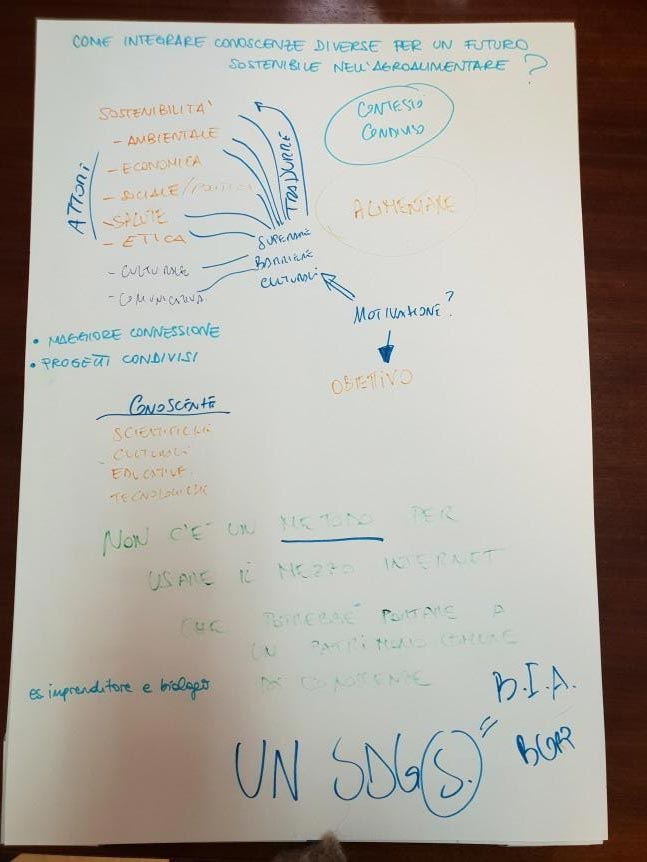
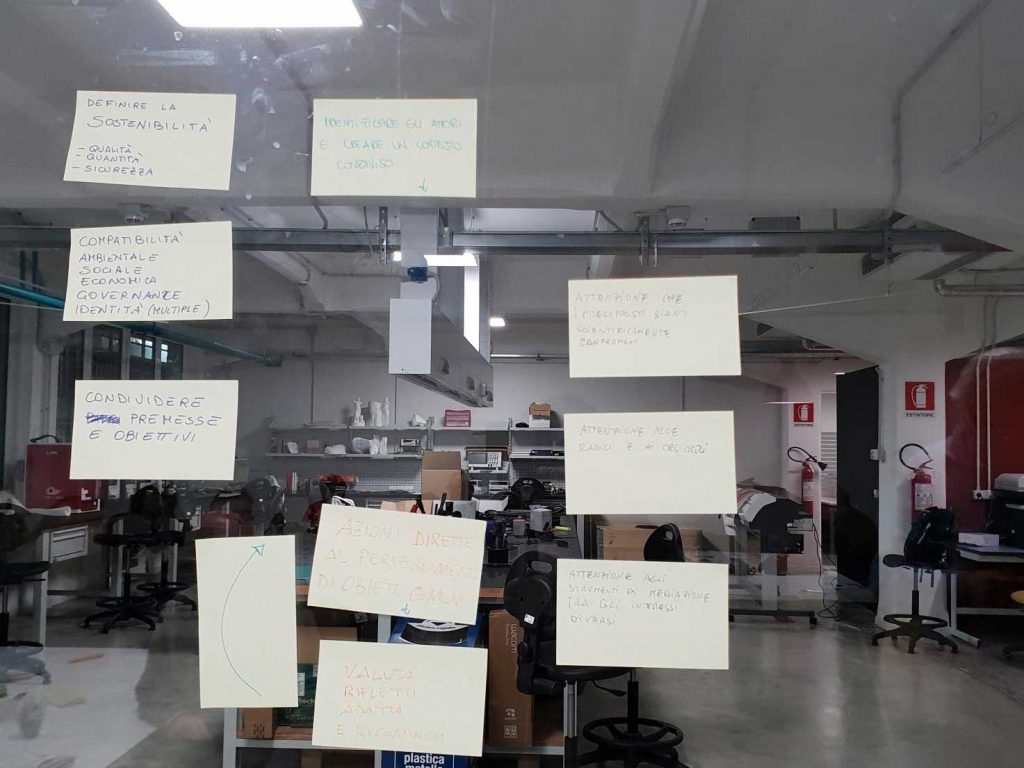
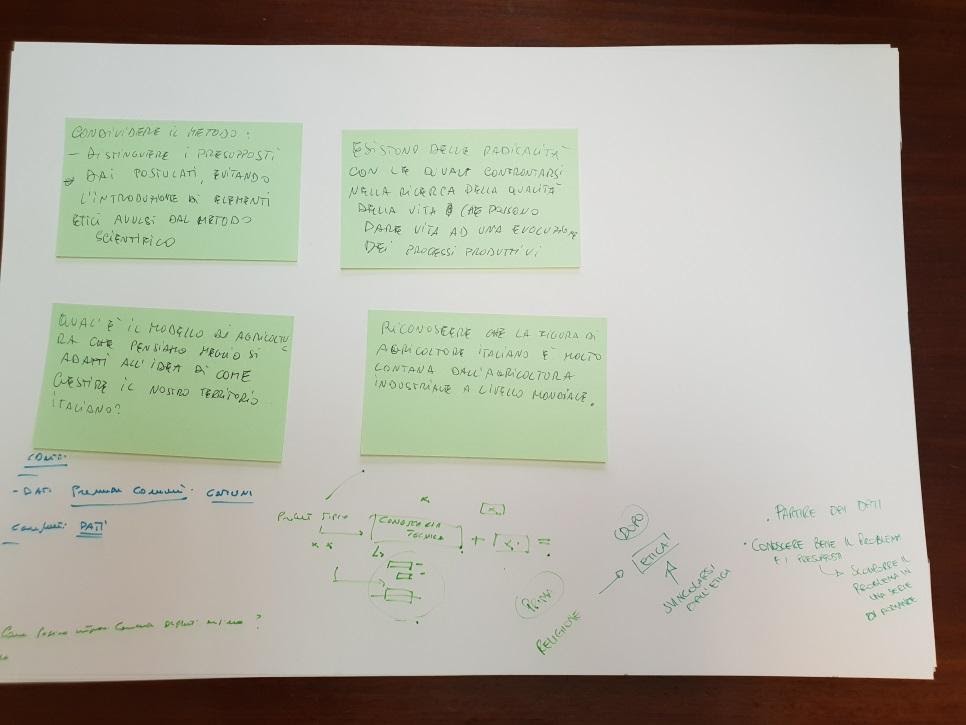
Emergent benefits of Collective Intelligent facilitation
I won’t go into the details of the content produced in this session but I want to highlight the type of reasoning and expectations you can have:
- Strangers, work together to produce a common idea.
- People know each other: relationships and collaborations will bloom.
- Sparse and disordered knowledge gets refined and its clarity is increased.
- Lots of doubts and questions are raised: this enriches the key question and the foundation of the Sponsors’ mission.
- Taken-for-granted knowledge and well-established definitions are put to a test. Examples: sustainability, collaboration, intelligence, problem solving, design, etc.
- A more holistic and systemic thinking is naturally nurtured. A diversity of opinions promotes wider perspectives.
- More inclusion. Shy, less represented, unengaged people are included in a collective process relevant to them.
- Systemic Design. A more structured, design-based, rational process tends to emerge. Empathy for stakeholders increases. Consequences of actions are considered.
- Critical Thinking. A more critical approach to thinking is reinforced by the diversity and the knowledge of participants. A more rational thought is a better thought.
- Leadership. Participants get in touch with the process of governance, decision-making, management and leadership. Some of them, unfortunately, for their first time.
- Personal development. A bond is created between participants. If they were motivated to participate in the first place, and if they had a great experience in the workshop, they will feel even more motivated to go deeper and to do more.
Did we solve our problem? How to measure the solution’s effectiveness?
This kind of workshop can be done dozens of times while discovering new knowledge, new ideas and useful insights, each time. The key concept is to iterate and adapt while integrating the discoveries and the clarification into an organic knowledge base. Facilitators and organizers, when it is not possible to delegate to participants, become the custodian of the new knowledge built. A heritage of refined knowledge which needs to be carried on the next steps, next actions or the next editions of workshops. With the same participants or with new ones.
That is why a workshop like this is to be considered the start of a process. At the foundation of a movement of people wanting to understand better the context of the complex problems they want to mitigate. Those same people, to have their time worth, need to meet, again and again, to apply Collective Intelligence techniques and methods if they want to see, in perspective, possible action to take, to dream about a solution. Or, a new possible and better future.
So it is difficult to talk about success criteria and metrics in this type of participatory workshop. It’s the group who decides what is useful and worth to produce, to write down and to transfer to the future activities. A lively and moderated discussion should be encouraged by the facilitator to promote reflection on the results and envisioning of the next steps to take.
And now what? What did we learn?
If we don’t reflect, together, immediately in the final part of the workshop and soon after with the organizers we risk to lose the best of the results. It’s important to reach the final part with focussed energy to spend. All the work done so far was to allow higher thinking and reflection upon the insights gathered.
Sponsors, organizers and facilitators should absolutely do a retrospective after the workshop. What worked? What did not go well? What have we learned? How can we refine our strategy by adapting the next workshop? Second-order thinking is the cornerstone of the entire work, otherwise, it is just a bunch of people talking.
An example of the outcome of this workshop:
- We decided to share the material produced online to invite the discussion to continue.
- Suggestion to apply, immediately, any new learning in everybody’s day-to-day life, especially in their organizations.
- Identified the need of writing a manifesto to express our common intent.
- Promoting each’s organization involvement to guarantee a more stable presence and participation to the next workshop events.
- Initiating a systems change process by identifying specific actions to take.
The final message was:
“(On the road to sustainability) we do what we must do.
What will be possible will happen!”
Credits:
Thanks to Andrea Sonnino, Paola Carrabba of OsservAgro, and Antonella Pastore for the support in reviewing this article.
Reference
- Osservatorio sul Discorso nell’Agroalimentare. Report of Workshop 1, 18 December 2018, Rome, italy, by Paola Carrabba and Andrea Sonnino.
- A leader’s framework for decision making by David Snowden, Harvard Business Review, 2007. The Cynefin framework is a sense-making device aiding decision-making, created by Dave Snowden.
- Complexity, Cynefin, and Agile. Overview and an example of how Agile aligns with the Cynefin framework.
- From an isolated laboratory to a world where “context is everything” by Marco Valente, visited on 2020/03/29
- Questions for figuring out a system’s inclinations -facilitation tool (Beta version) by Marco Valente, visited on 2020/03/25. Marco provides a facilitation method for Collective Sensemaking inspired by the Cynefin framework.
Series Navigation
Collective Intelligence Design and Facilitation

